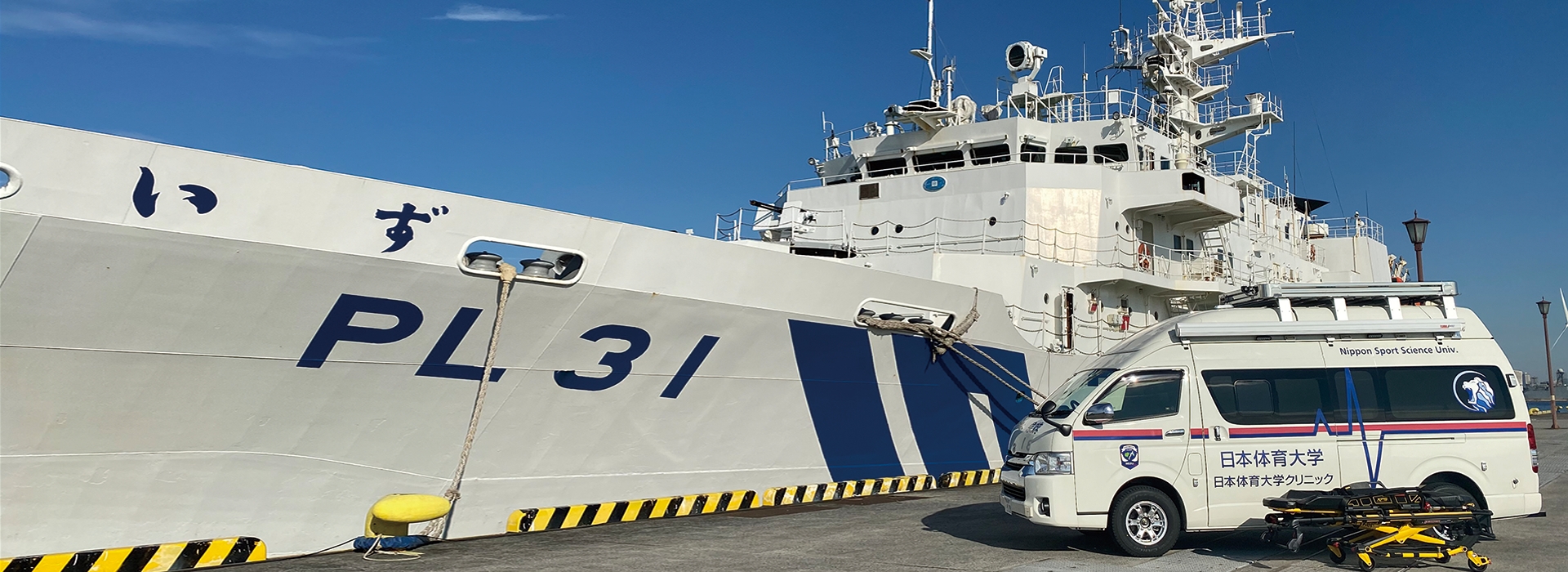
Department of Emergency Medical Science
Learn versatile practical skills for executing the crucial task of saving people’s lives in urgent and critical situations, and become emergency life-saving technicians.
The curriculum at the Department of Emergency Medical Science is made up of three key modules, which are emergency medicine, resuscitation medicine, and disaster medicine, each of which is designed for the students to learn the essential knowledge and
skills for engaging and instructing in emergency medical activities in global settings, and become qualified emergency life-saving technicians. It is optimized to promote the intensive cultivation of the high ethical values and sublime spirituality
that are required of competent health professionals, and includes special lectures by many prominent figures that are making an impact in their respective fields in Japan, along with a whole range of preparatory courses and support services for national
certification examinations and employment search, and high-quality lectures and applicable practicums taught by experts.
| Curriculum duration: | Four years |
| Academic degree: | Bachelor (Emergency Medical Science) |
| Class size: | 80 students |
| Graduation requirement: | 133 credits at least |
Career paths and qualifications
Typical career paths
- Career in medical operations and facilities
- Life-saving technicians working at train stations, airports, schools, companies, and other facilities
- Continue working as researchers at universities and hospitals with ability to give instructions in clinical settings also
- Work overseas involved in international contribution activities
Licenses and qualifications that may be obtained
- Emergency life-saving technician (eligibility for examination)
- Class-1 health manager
- Bousaishi (disaster prevention/mitigation technician; eligibility for examination)
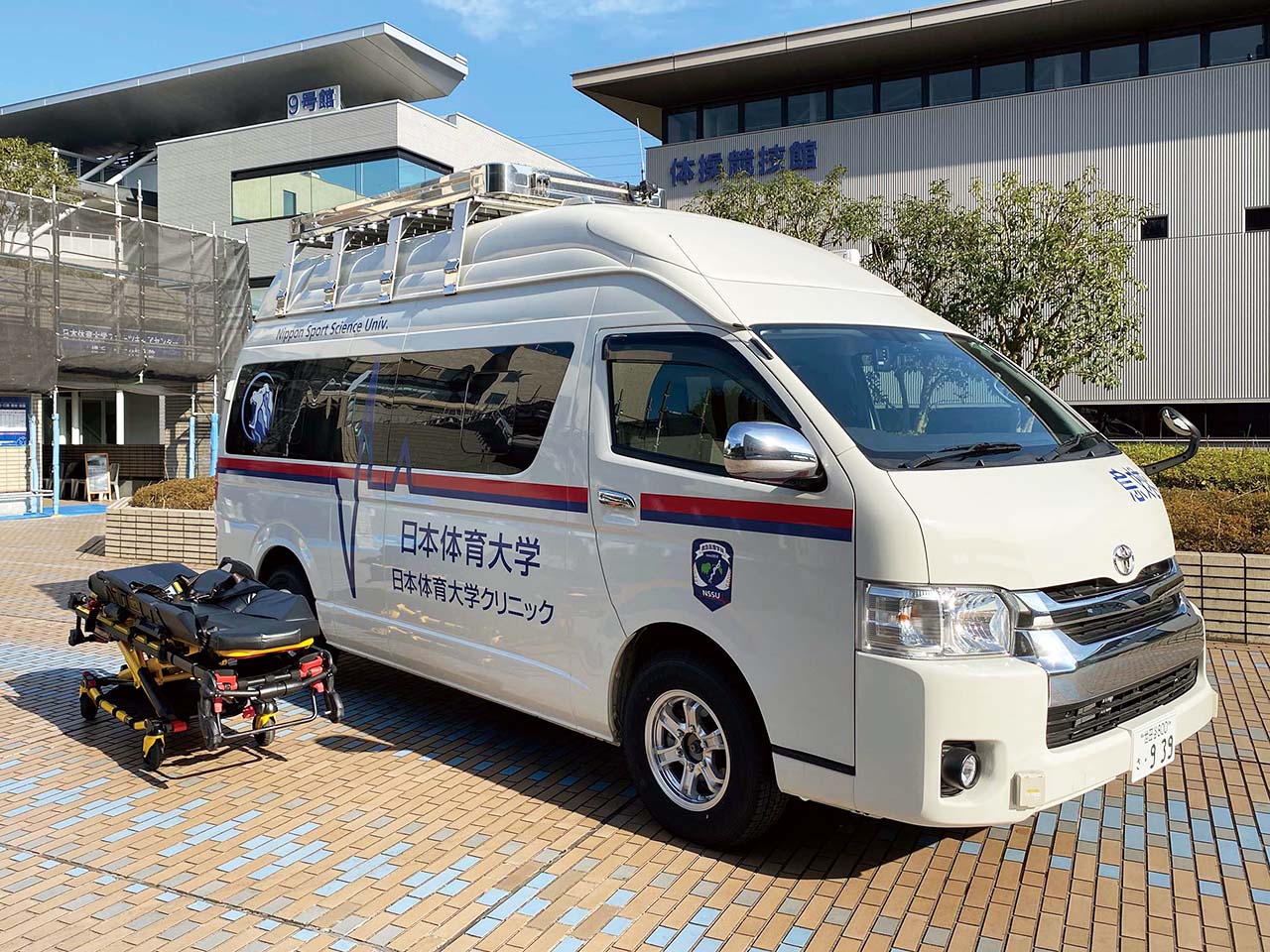
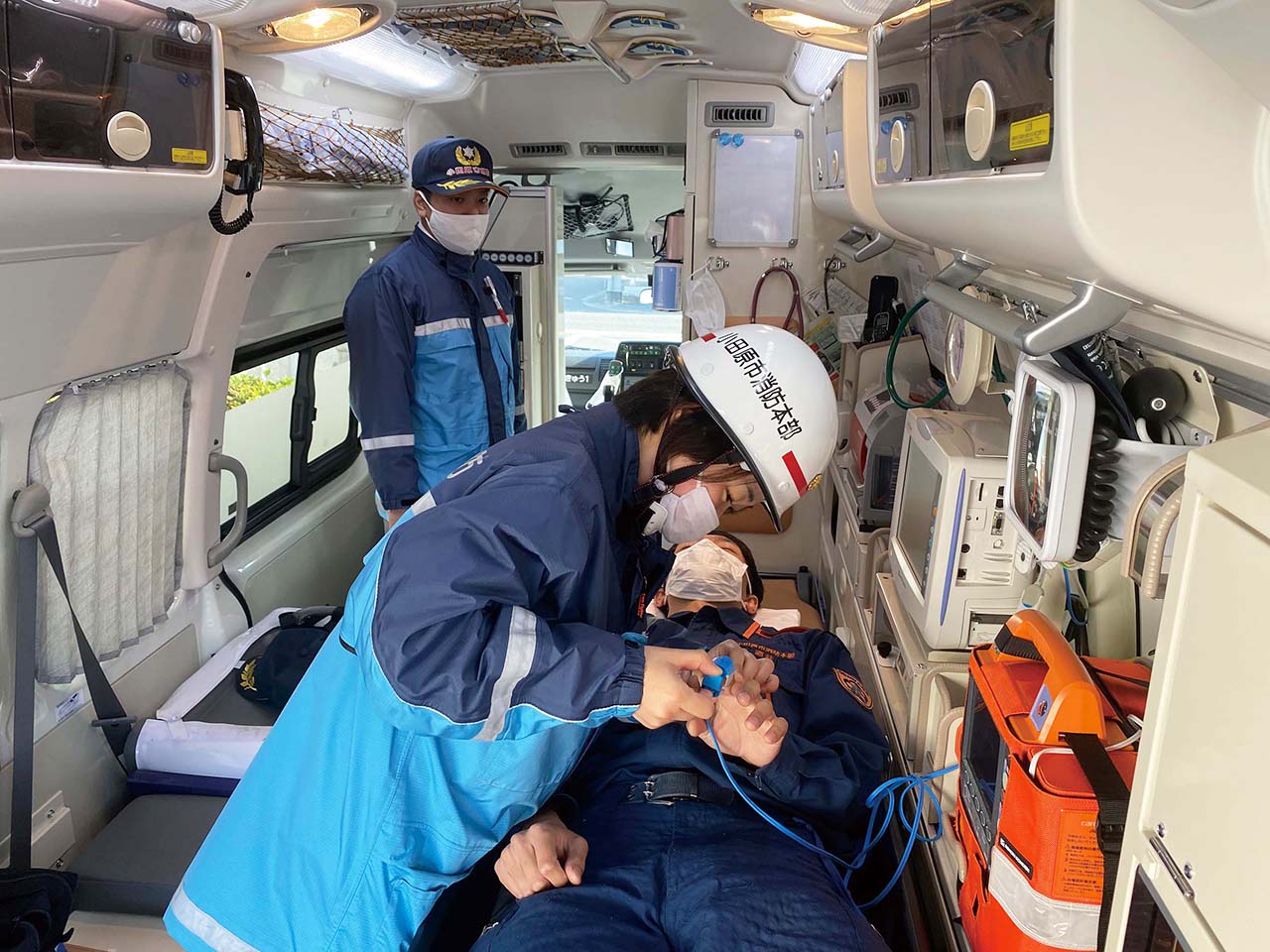
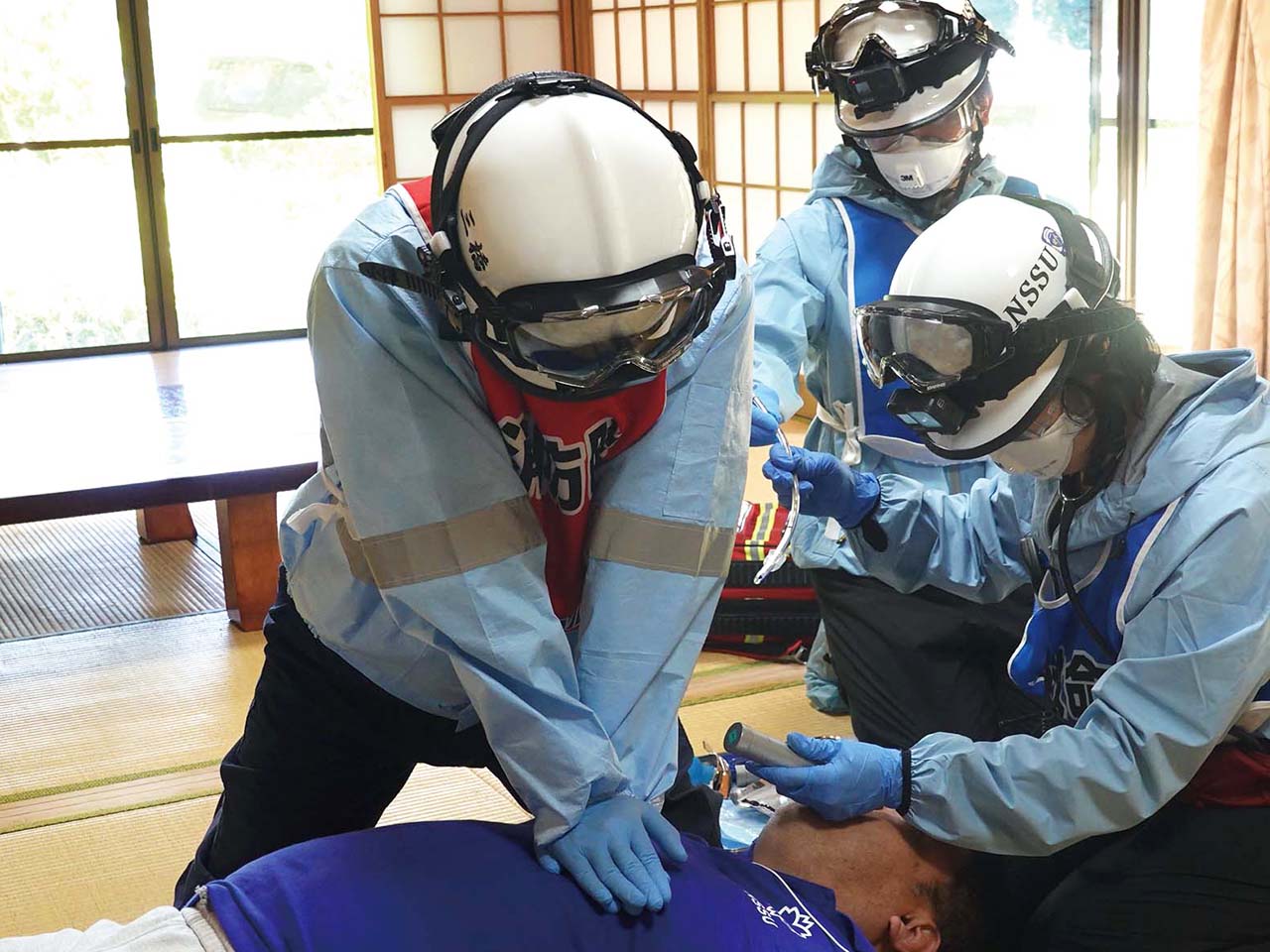
Key departmental features
Training the students through a whole range of lectures, skill demonstration, and practicums to become medical professionals possessing excellent theoretical knowledge and sensibility.
The Department of Emergency Medical Science trains its students using a curriculum that integrates lectures in basic and clinical medicine, lecture and demonstrative courses in emergency and disaster medicine, on-site practicums involving ride-along training
in ambulances at several fire departments in the Kanto region, and training at famous specified clinical hospitals, etc. along with academic dissertation research instructions, which are all designed to maximize the students’ chance of passing their national
examinations, and to develop them into healthcare professionals that possess excellent theoretical capacity and sensibility and are able to thrive professionally in various fields.
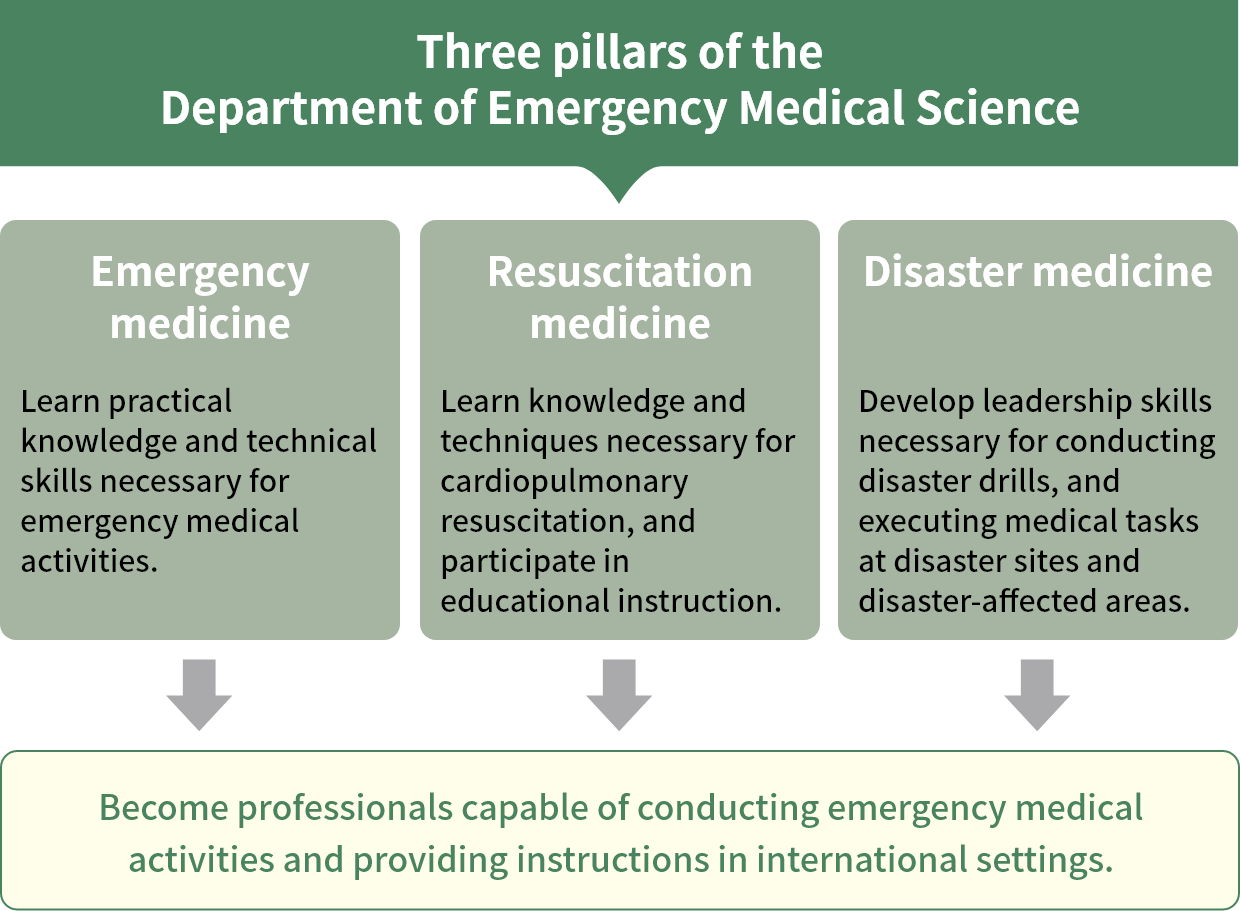
Ride-along practicum in ambulances
Ride-along practicum in ambulances at fire stations in various parts of Japan
While many schools that provide training to become emergency life-saving technicians have been cancelling their practicums at hospitals and fire stations due to the novel coronavirus pandemic, NSSU’s Department of Emergency Medical Science has been conducting its practicums as it normally does, based on its belief that such time as this presents a crucial opportunity where the students should learn about health professionals’ work by observing them in action. Ride-Along Practicum in Ambulances II is one of the courses offered for this very purpose. The Department’s curriculum includes several on-campus practicums that employ state-of-the-art science and technology to hold IT-powered remote review sessions and learning modules using VR-enabled study materials, through which the students learn the entire flow of emergency medical activities, from the time the initial emergency call is placed to the 119 hotline until the patient is safely admitted to the hospital. The students then move onto the ride-along practicum in ambulances at fire stations in various parts of Japan, to which NSSU has reliable ties. Through such rare and valuable experience, the students develop their tried-and-true crisis management capability.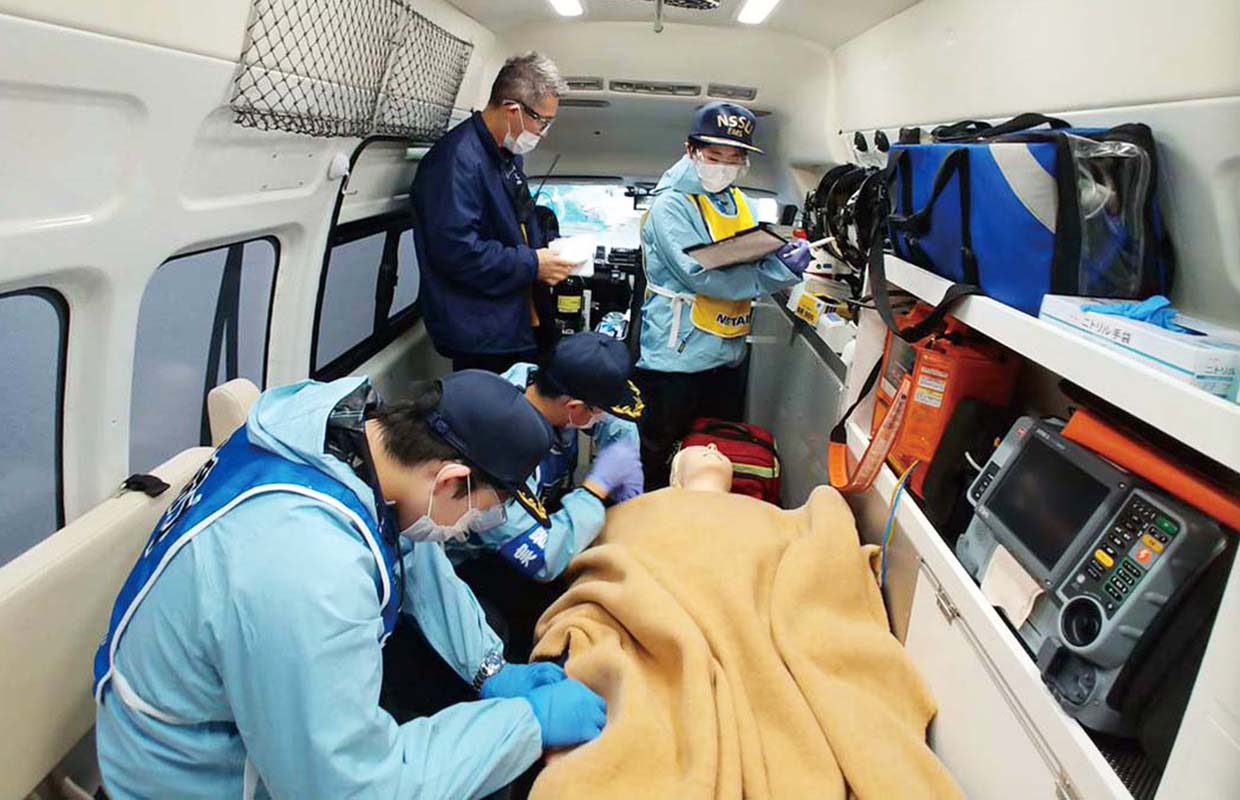 On-campus practicum in a running ambulance, with a firefighter in active service present to provide instructions
On-campus practicum in a running ambulance, with a firefighter in active service present to provide instructionsThe profession of emergency life-saving technicianhelps create a society where more female professionals flourish!
Currently, only 2% of all ambulance service crew members in Japan are female. As there is a fifty-fifty chance that any given patient waiting to be rescued at the scene of an accident is of either biological sex, it is expected that more females will enter the field of emergency medicine in the future. Ms. Mayumi Nakazawa—one of the instructors teaching this course—worked for the Tokyo Fire Department for 20 years and has a wealth of experience serving in the capacity of ambulance service captain and lieutenant. She is living proof that females are capable of executing all necessary tasks that occur in emergency medical services. The ratio of female students enrolled at the Department of Emergency Medical Science is roughly 20% at the moment. The team of instructors led by Ms. Nakazawa provides attentive support to all students, both male and female, until they become capable of executing their tasks effectively as emergency life-saving technicians, drawing from Mr. Nakazawa’s professional experience taught in the course.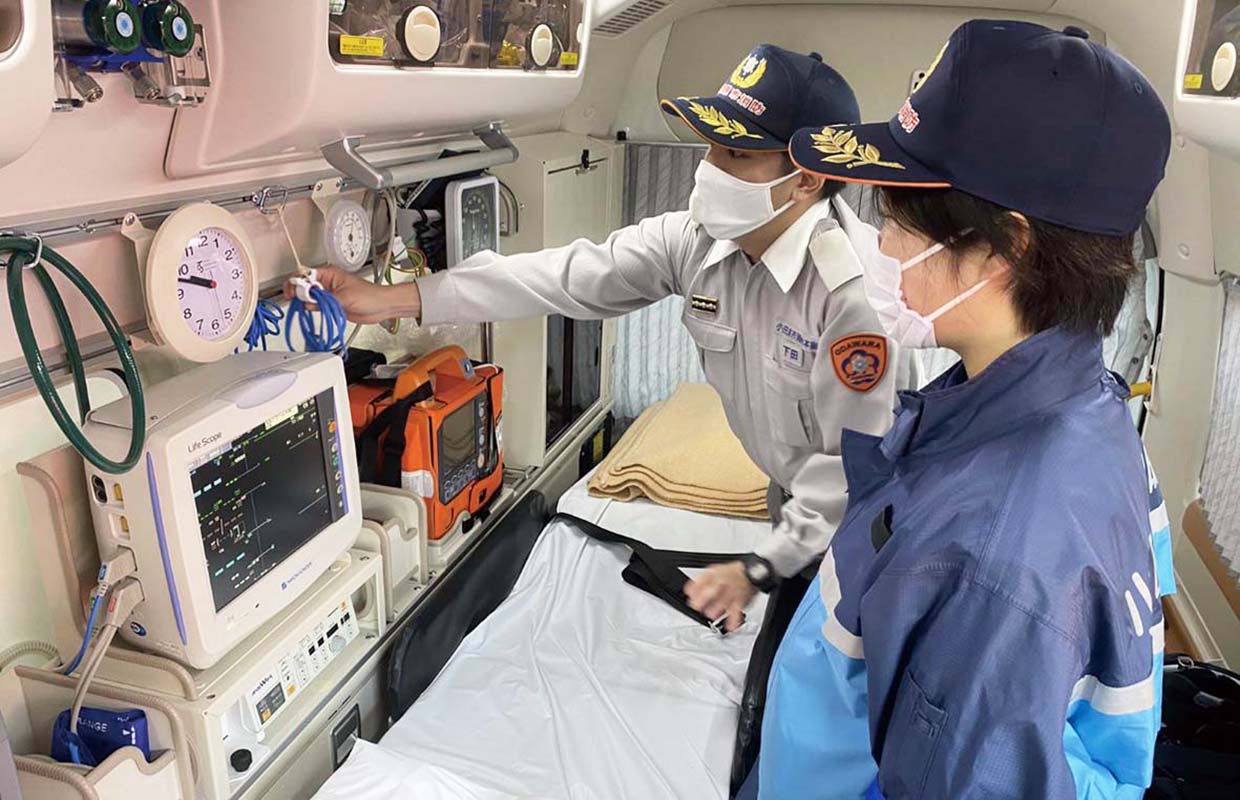 The Department is all ears for the students’ requests and preferences! This is reflected on the ride-along practicum in ambulances held at fire stations across Japan.
The Department is all ears for the students’ requests and preferences! This is reflected on the ride-along practicum in ambulances held at fire stations across Japan.Department’s academic aim
Sample courses
Cadaver DissectionObservationPracticum
Learn the essential structure of the human body relevant in emergency medical services through this gross anatomy course.The study of anatomy is a vital foundation based upon which one can learn specialized knowledge and technical skills required of a competent clinical health professional. The curriculum at the Department of Emergency Medical Science offers this macroscopic anatomy course involving multiple practicums such that the students can clearly understand the human body structure three-dimensionally, which is unheard of at other higher education institutions in Japan. The experience delivered through this course—the emotionality felt the moment the actual organs are held in one’s own hands, and the sense of gratefulness that arises for the individuals that left the cadavers for the study—is sure to evoke a sense of sublime spirituality in each student participating student and leads to its internal growth. In Anatomy III, an instructor that is one of the luminaries in the field of gross anatomy is invited to give lectures.
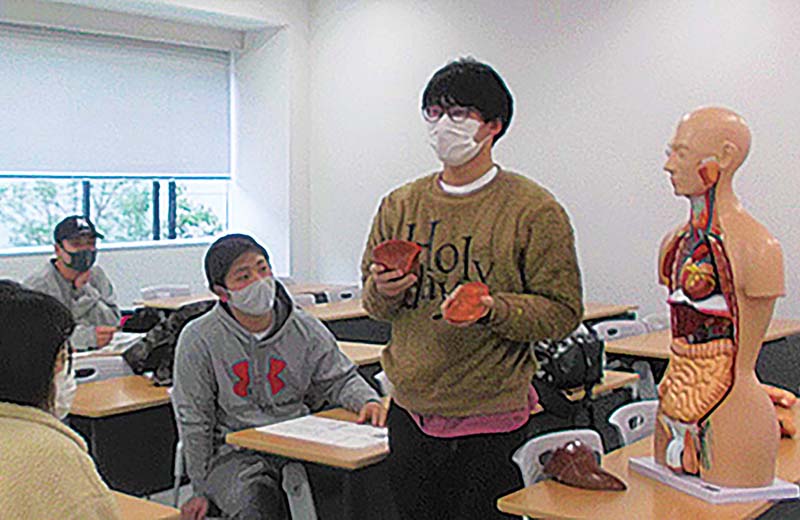
Disaster Medicine
Leading experts in disaster medicine in Japan are invited to teach the latest knowledge in the field.After allthedisaster medicine courses covering natural disasters, human-induced disasters, and special disasters have been held, prominent domestic and international experts as well as leaders playing an instructional role in Japan’s disaster medical assistance team (DMAT) are invited to speak in this course, sharing their experience of providing instructions at various disaster sites around the world. This unique yet practical lecture series is one of the course highlights, which certainly gives the motivational drive that the students need to become competent emergency life-saving technicians themselves!
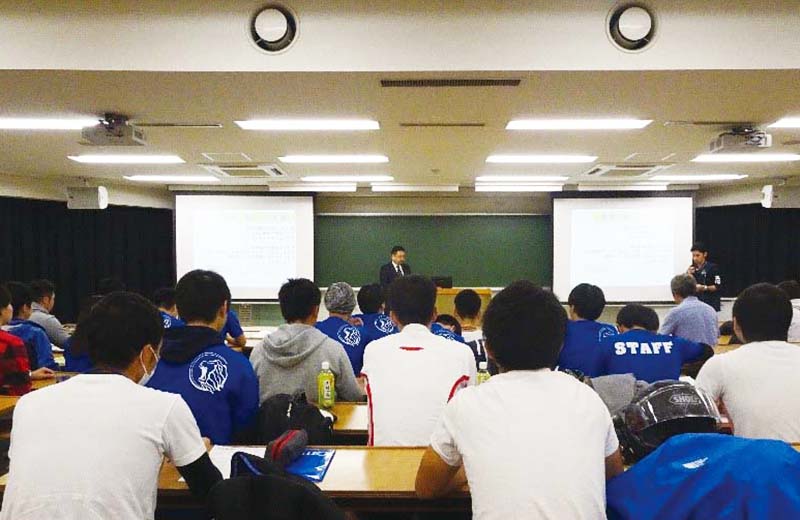
Hospital practicum
NSSU is the first higher education institution in Japan with an emergency life-saving practitioner training program that has implemented this unique hospital practicum protocol that is not only designed to enhance the educational impact of hospital practicums but also pay attention to and care for the participating students’ mental aspect. Based on this protocol, the practicums in the second year are held at initial-level and second-level emergency hospitals, while the practicums in the third year are held at third-level emergency hospitals (emergency life-saving centers).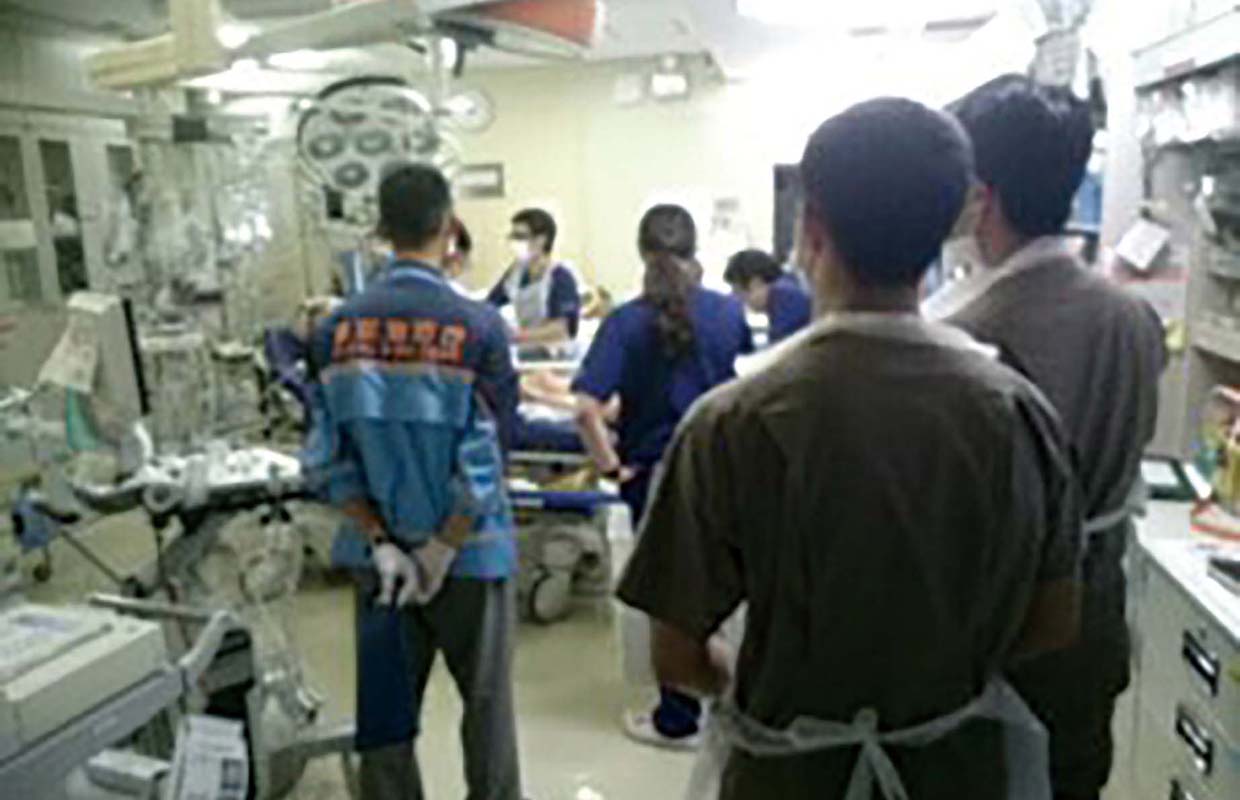 Practicum at an emergency life-saving center
Practicum at an emergency life-saving centerComprehensive cooperation agreement between NSSU and the Japan Coast Guard
On November 30, 2020, NSSU has signed a comprehensive cooperation agreement with the Japan Coast Guard’s 3rd Regional Coast Guard Headquarters. This arrangement will afford valuable opportunities for the students to obtain insights into emergency medical rescue activities in maritime disasters, in addition to those conducted by the fire departments.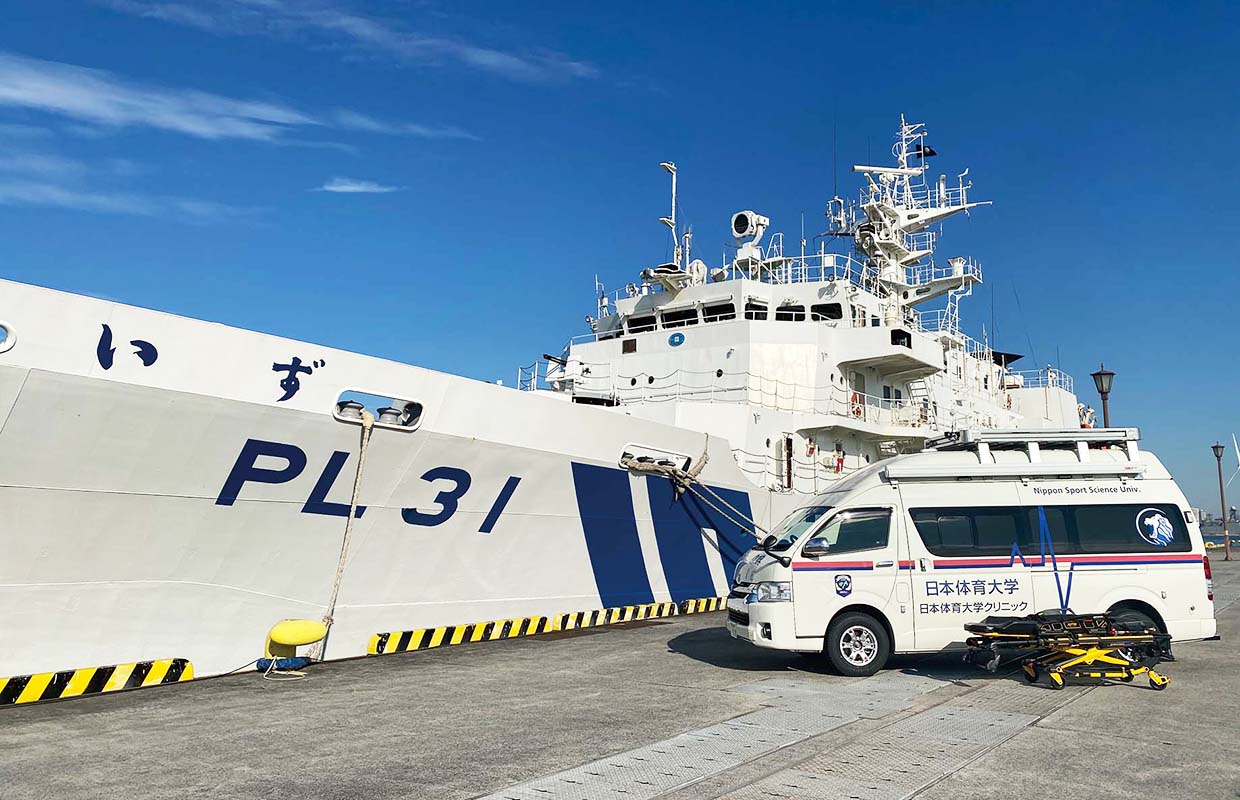 Comprehensive cooperation agreement executed between NSSU and the Japan Coast Guard
Comprehensive cooperation agreement executed between NSSU and the Japan Coast Guard